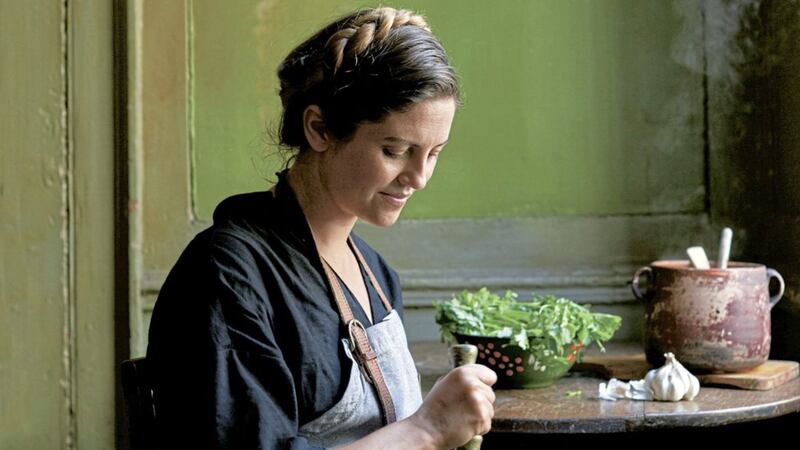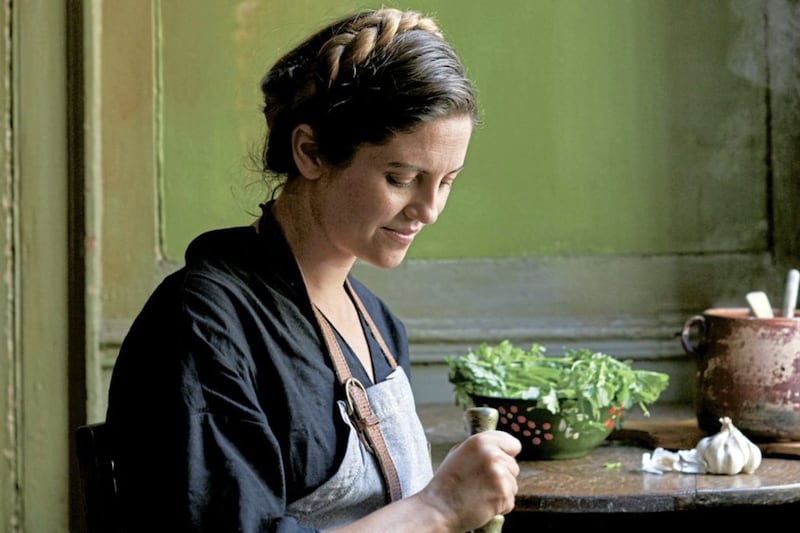WE'RE late in this part of the world in unearthing the joys of Georgian food, says writer and food stylist Olia Hercules. "Everybody was so busy with the Middle East, and loving that, that we haven't ripened to the Georgian thing," she states. "I'm quite surprised it took so long."
Our lack of Georgian love is set to change though, with the release of her second cookbook, Kaukasis. A follow up to 2015's Mamushka, which explored Olia's Ukrainian heritage – she was born in Kakhovka, a port city on the River Dneiper in Ukraine – this new collection of recipes focuses on the Caucasus, the hub of countries packed together like pickles in a jar at the border of eastern Europe and western Asia.
For the book, Olia (34) returned to the countries that she, her parents and elder brother meandered through on a road trip to visit family in Baku, Azerbaijan, when she was a toddler.
"We drove from the south of Ukraine, through Crimea, took a ferry to Russia and Sochi, and drove through Georgia and into Baku without even warning them. We were just like, 'Oh, shall we go to Baku?' – my parents are crazy wanderlusts – so we drove and we got there and it was amazing."
Returning as an adult, Olia retraced as much of that family trip as possible, gathering recipes and ideas along the way. She toured Georgia – travelling in marshrutka cars – the Caucasian equivalent of the Belfast black cab ("little vans that you can go to another side of Georgia in for a fiver") – and Azerbaijan, going as far as Lankharan on the border, which is heavily influenced, both in food and culture, by its neighbour, Iran.
Today, Olia, who trained at London's Leiths cookery school and was a chef-de-parti at Ottolenghi, is bustling around the kitchen of her east-London flat, pickling huge, shiny unripe tomatoes, but, she says, no tomatoes can compare to the ones you get at markets in the Ukraine and Georgia.
"The best tomatoes I've ever tried for sure. They're massive – the size of your head – but flavoursome, juicy, everything you need from a tomato is there."
Georgian and Azerbaijani cooking were woven into Olia's childhood, and growing up in the ex-Soviet Union, where ingredients could be really quite scarce at times. She remembers that, if you were eating out, Georgian restaurants "might be OK for food, otherwise it'd be horrible – otherwise you'd really have to go into people's homes to eat well".
Meeting home cooks is still something that fascinates Olia, who includes recipes from the people she met on her travels in Kaukasis.
"Especially in rural areas, if you go to visit someone, they will have a massive barrel of cheese that they make every morning and then they salt it, or they make buffalo butter, which is the most delicious thing I've ever tried – I could have eaten it with a spoon," she remembers.
The markets, particularly in Georgia, are as astounding as the tomatoes, too. "Your mind is blown," says Olia with a grin. "Especially those who love unusual ingredients. You can have little barberries from Tusheti, there's crazy wild plants and mushrooms I've never heard of before, and alycha plums [similar to greengages]. People use them when they're firm and green and quite sour to make this plum sauce, tkemali; a hot and sour plum ketchup."
And, if you're looking for herbs (huge fresh bundles of purple basil, tarragon and dill are used in almost everything, even refreshing fizzy drinks), the trick is to "look for an Azerbaijani lady – apparently Azerbaijanis grow the best herbs".
:: Kaukasis by Olia Hercules, photography Elena Heatherwick, is published in hardback by Mitchell Beazley, priced £25.
KOHLRABI SALAD
(Serves 4)
1tbsp pomegranate molasses
50g Tina's tkemali sauce (see below)
Honey, to taste, if needed
2 heads of chicory, sliced lengthways into 8 wedges
1 kohlrabi, peeled and thinly sliced
50g radishes, thinly sliced
25g sorrel leaves (or watercress)
Sea salt flakes
For Tina's fresh tkemali:
(Makes 1.2L if not cooked down too much)
1.5kg yellow and red Alycha plums (or greengages or ordinary plums)
1/2tbsp dried mint
1/2tbsp dill seeds (or 1/2tsp fennel seeds)
1tsp ground coriander
1tsp ground blue fenugreek
5 garlic cloves, grated
1/2tsp cayenne pepper
Sea salt flakes
Freshly ground black pepper
You will also need 4 x 300ml sterilized preserving jars
Make the tkemali: Put your yellow and red plums/greengages/plums whole into a saucepan. Add a splash of water and let them come to the boil. Cook for about 10 minutes until soft and they separate easily from their stones. Leave the plums until cool enough to handle, then remove the skins and stones.
Mix the plum flesh with the rest of the ingredients, season to taste and cook for a further two minutes. While the sauce is still hot, transfer it to the sterilized jars, seal the jars and immerse them in a deep saucepan of simmering water for a few minutes. Then store in a cool, dark place all winter or, if eating straight away, keep in the refrigerator.
Make the salad dressing: Mix the molasses through the tkemali, then taste, adding some salt or a little honey if you think it's too tart. It should really taste strong and pack a punch. Toss the chicory, kohlrabi and radishes in a bowl, then arrange in a serving dish with the sorrel leaves (or watercress). Serve with the dressing drizzled over.
POLYPHONY COURGETTES
(Serves 4 as a side)
4tbsp sunflower oil
4 shallots or small onions, halved
2 courgettes, cut into 2cm rounds
5 garlic cloves, cut in half vertically
2 long green chillies, bruised but left whole
Handful of fresh sour cherries and/or redcurrants
Sea salt flakes and freshly ground black pepper
To serve:
Sourdough bread
Method:
1. Heat the oil in a large frying pan, add the shallots or onions and cook over a medium-low heat until they soften and start turning golden. Remove from the pan.
2. Add the courgette rounds and brown on each side.
3. Reduce the heat, add the garlic and chillies and season everything really well. Cook for three minutes.
4. At the very end, add the sour cherries and/or redcurrants and switch off the heat. Taste again and season with some extra salt and pepper if it needs it.
5. Serve with sourdough bread or as part of a bigger feast.



